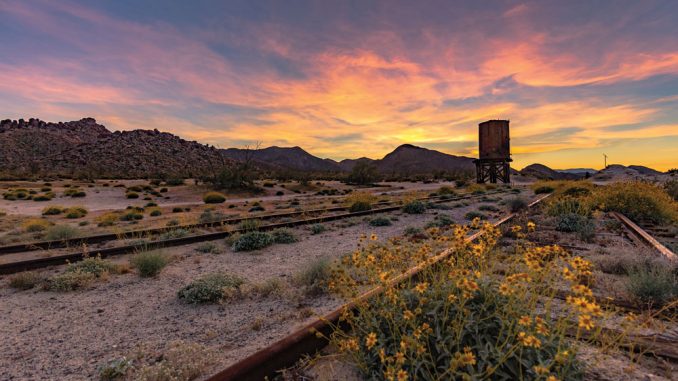
Wherever you might find yourself, in whatever situation, you will need water. Even if you have a source of water, you will need some way to store that water—not only for the short term, but for the long term, as well. This is where having a cistern comes into play.
What Is a Cistern?
Simply put, a cistern is a leak-proof container used to store liquids; in most cases, it is used for water. The technology behind the use of a cistern is very ancient, with cisterns being used extensively by both the Roman and Greek cultures. There is evidence that cisterns were in use in many of the desert regions of the Middle East even earlier, and they are still in use today.
BEFORE THE AGE OF PUBLIC WATER SYSTEMS, CISTERNS WERE VERY POPULAR HERE, IN THE UNITED STATES, ESPECIALLY IN RURAL AREAS. AS LATE AS THE 1940s, A CISTERN WAS A COMMON FEATURE IN MANY HOMES.

These wooden barrels are being used to store rain runoff. If you can find used barrels at a reasonable price, they can make good cisterns for your garden and landscape watering needs.
Anywhere that water was in short supply or in areas where digging a well was impossible or impractical, cisterns were used to collect and store rainwater. Before the age of public water systems, cisterns were very popular here, in the United States, especially in rural areas. As late as the 1940s, a cistern was a common feature in many homes.
How Do Cisterns Work?
Cisterns are designed to store water for later use. That means filling them when water is plentiful and drawing from them when it’s not. The source could be as simple as rain runoff from the roof of your home, shelter or other buildings (even a tent), or it could involve feeding water from a free-flowing mountain stream into the cistern.

In this 1911 kitchen, the hand pump on the counter brought water up to the sink from the cistern in the basement.
By far, the simplest method is by collecting rain runoff from a building. Your roof is a very large surface and can collect vast volumes of water very quickly. As the water runs down the roof, it can be funneled into your cistern using existing gutters and downspouts that feed directly into it.

This home gardener is using a simple gravity- fed water system to provide water for her plants.
Cisterns can be located inside or outside, depending on your needs and the environment where you live. External cisterns in areas where it gets below freezing can be problematic, which is why they are often built under the houses in these regions.
There are a few ways to draw the water. One way (and this is how I access the water in my cistern) is to put a spigot at the lowest point and allow gravity to push the water out. Keep in mind that as the water level in the tank drops, so does the water pressure. The lower the pressure, the slower the water will flow.

This ancient Roman in-ground cistern in Catalonia, Spain, is dry now, but it served the needs of the locals for a very long time.
This method works great for elevated and/or aboveground cisterns. The other way, which is the best way for underground cisterns, is with an electric or manual pump of some sort. As you might expect, the electric pump will only work if there is electricity, so I would either choose a manual pump or at least have a manual pump as a backup.
How to Make a Cistern
In times gone by, cisterns were just holes in the ground lined with close-fitting rocks that were made waterproof by using a lime-based plaster. As conditions, times and materials changed, so did cistern construction methods. Wooden casks—the same construction used for bourbon and wine storage—were used, as well as containers made from iron and steel (although iron and steel will rust over time and put impurities into the water).
EVEN IF YOU HAVE A SOURCE OF WATER, YOU WILL NEED SOME WAY TO STORE THAT WATER—NOT ONLY FOR THE SHORT TERM, BUT FOR THE LONG TERM, AS WELL. THIS IS WHERE HAVING A CISTERN COMES INTO PLAY.
Today, there are materials, such as hard plastics, that can withstand a great deal of environmental and physical punishment. If you do use plastic, make sure it is either food grade or designed to hold water for human consumption. Some plastics will leach deadly chemicals into your water, so caution needs to be taken.

This farm pond in Italy is a great example of a large-scale agricultural cistern that has been in use for generations, if not centuries.
There are pre-made cisterns available on the commercial market (most smaller ones are labeled as “rain barrels”), but it is just as easy and less expensive to make your own. Parts are readily available, and you might even have most of them on hand already.
WHETHER YOU ARE FILLING YOUR CISTERN WITH WATER RUNNING OFF YOUR ROOF OR FEEDING IT FROM A FREE-FLOWING MOUNTAIN STREAM, THE WATER IS NOT SAFE TO DRINK UNTIL AFTER IT’S BEEN PROCESSED.
With a donated food-grade container and some plumbing parts I had scavenged, I was able to make my own at no cost, except for time. Keep in mind that the more elaborate you make your cistern, the more time and money you will spend doing it.

This rain collection system includes a solar-powered filtration system to make the water potable.
The good news is that if you make it yourself, you will get exactly what you want and need. How large you make your cistern will depend on your intended use and available water (see the How Large a Cistern Do I Need? sidebar below).
Location, Location, Location
Where you locate your cistern makes a huge difference in its convenience and performance.
You should make sure it is located as close as possible to where the water will be used. The farther away it is, the more effort will be required to get the water to where you need it. If your water source is not nearby, you’ll need more pipe on one side of the cistern or the other, so you might as well situate the cistern close to where the water will be used and run the majority of the pipe from the source to the cistern.

This is an above ground cistern with a roof collection system. Notice how the gutters run into the cistern.
Now that you have figured out the location, you will need to decide whether you want an above or below ground cistern. Both have their benefits and drawbacks.
To help figure that out, consider what type of area you are in. Do you get freezing temperatures for long periods during the year? Do you get heavy snow cover? If so, and you plan on using the cistern as a major water source, I recommend not using an above ground cistern if at all possible. An underground cistern will be more resistant to freezing. Locate it either under a porch or in the basement, because it will help keep the water from freezing.

Rain catchment systems can be simple and scalable to your changing needs. Notice the overflow hose that runs from one barrel to the other, ensuring that no water is wasted.

In parts of California, more new home construction includes piping for rainwater collection systems.
If your main purpose for the cistern is to use it for irrigation for your garden during dry times, an above ground cistern will work. I have an above ground cistern that I drain prior to the yearly freeze. This keeps the container from getting damaged by the water freezing and expanding inside the unit.

This gutter and drainpipe system catches rainwater off the metal roof and feeds it into the home’s cistern for use during dry periods.
No matter what type of cistern you build, you are going to want to keep impurities out of it. If your water source is your roof, one way to do this is to put a screen of some sort over your gutters. You can go out and pay for commercial gutter covers, or you can save some money and just purchase some hardware cloth and cut it to fit. Either way, make sure to keep the screen free of debris. Doing so will keep water flowing into the gutters and thus, into your cistern.
What Kinds of Roofs Work the Best?
While cedar shingles and bark roofing look nice, they aren’t the best if your intent is to have roof runoff fill your cistern. Natural materials will often leech things such as tannin and resins into the water; some of this can be poisonous if ingested. Natural slate roofing works great, because the tiles will stop a great deal of debris from running into your water supply, and there would be little chance of contaminates.

This simple rain barrel is a form of garden cistern. While it has a handy spigot at the bottom, it is a standalone container that needs to be filled directly by rain or manually from other sources.
Asphalt roofing is not the best choice—simply because it is made from petroleum products and has health hazards associated with it as a result. Metal roofing, such as tin and aluminum, work well. However, avoid painted surfaces, because they can contaminate the water over time. If you do happen to have asphalt, cedar or bark roofing, make sure you carefully treat the collected water before ingesting it.
To Drink or Not to Drink
Do not drink the water that comes from a cistern without serious water processing. Whether you are filling your cistern with water running off your roof or feeding it from a free-flowing mountain stream, the water is not safe to drink until after it’s been processed. You have no idea what is in that water. Leaves, sticks and bugs are the things that you can see, but I’m afraid of the things that I can’t see: Rainwater contains atmospheric dust and other contaminants that might be harmful if ingested. As the water sits in your cistern, things such as lead, which can come from a variety of sources, will settle on the bottom.

Washing hands with unprocessed water stored in a cistern should be fine as long as you don’t eat with your hands afterward—but don’t drink that water unless it has been treated.

This large rainwater catch tank on an Australian farm provides most of the water for the household during times of drought.
Left untreated, water from a cistern is best used in toilets, general cleaning, showers and hand washing.
If you want to use the water for cooking and drinking, all is not lost. Think of your cistern as a big canteen. If you were away from the security of your home and you came upon a water source, how would you make it safe to drink? The same can be done with the water in your cistern.
Boiling
This is great for small quantities at a time, but is it worth the effort? The answer is, “Yes”—in a survival situation, but it’s not practical for daily use. You will spend all your time and energy boiling water.
Disinfection With Chlorine
Treating the water with chlorine will disinfect it. However, remember that this chemical doesn’t remove impurities. A small amount of bleach goes a long way to improving water safety. Most municipal water supplies are treated with 1 ppm (1 part per million) of chlorine.
Filtration
A pool filter will not suffice; it will only catch large debris. You need a filter specifically intended to convert raw water to potable water. You can make your own, or you can simply purchase a large reverse-osmosis aquarium filter.
NO MATTER WHAT TYPE OF CISTERN YOU BUILD, YOU ARE GOING TO WANT TO KEEP IMPURITIES OUT OF IT.
Run the water from the cistern through the filter and then test it. You might need to modify the filtering system a little until you get the water to the point at which it is safe to drink. Alternatively, many companies make filters that can process water volumes from whole house and faucet levels down to compact, hiker-friendly filters. Your choice depends on your needs and budget.

In an age of modern conveniences, it is easy to forget lessons learned by past generations, but today, we need to revisit our past if we are to survive.
Clean water is a must, but it is not everywhere all the time. When it is available, we must store and conserve it … and that is where cisterns come in. A good cistern, like a solar panel, will help you survive off the grid. The way things are going, all of us might be off the grid sooner than later.
How Large a Cistern Do I Need?
The answer to this question depends on the planned use of the cistern. If you are using your cistern to supply water for the irrigation of a small garden, as I do, 50-gallon water capacity might be enough. On the other hand, if you are using it as a domestic water supply, you will obviously need a great deal more.
Once you have figured out your water usage for a month, you will need to multiply that figure by three. It is recommended that you have the capacity to hold a three-month supply of water to carry you through times of little to no rainfall, with a minimum storage capacity of 5,000 gallons.
How Much Water Do I Need?
To rely upon a rainwater catchment system for the majority of your water needs requires you to live in an area of reliable rainfall and an accurate estimate of your daily and monthly water needs.
The following figures were provided by Penn State Extension (an excellent overall resource for cistern information). These are estimates only, and your needs could differ, depending on where you are. Nevertheless, it is a good place to start.
According to the report, you should plan on providing 50 to 75 gallons of water per day per person. That seems like a lot—because it is. One-third to one-half of that water usage is attributed to flushing the toilet.
If you have an outhouse, you can cut your water usage by as much as 50 percent. Adding water-saving devices and adjusting your usage habits will reduce your water consumption even more.
SOURCES
National Tank Outlet
(888) 686-8265
www.NTOTank.com/cisterns
Pelican Water Systems
(844) 215-7390
www.PelicanWater.com
Penn State Extension
(877) 345-0691
https://Extension.PSU.edu/rainwater-cisterns-design-construction-and-treatment
Editor’s note: A version of this article first appeared in the April, 2018 print issue of American Survival Guide.






Be the first to comment